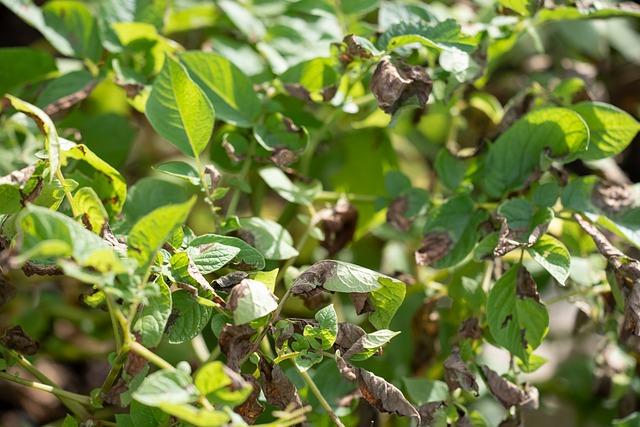Sweet potato vine houseplants are a great way to bring life into your home. They are easy to care for and can be grown indoors or outdoors. Not only are they attractive, but they also produce edible tubers that you can use in a variety of dishes.
These plants are native to tropical and subtropical regions, and are part of the Convolvulaceae family. When choosing a sweet potato vine houseplant, look for a variety that is suited to your growing conditions. Some varieties are more suited for indoor growing, while others do better outdoors.

Sweet potato vine houseplants are an attractive and easy-to-care-for addition to any home. With the right tips, your sweet potato vine will thrive and provide you with a beautiful, healthy plant that will last for years to come.
Choosing The Right Variety Of Sweet Potato Vine
When it comes to growing sweet potato vines as houseplants, the most important thing is to choose the right variety. There are different types of sweet potato vines available, and each type has its own unique characteristics Here are some tips to help you choose the right variety of sweet potato vines for your home.
1. Consider the Size and Shape of the Plant.
Some varieties of sweet potato vine are much larger than others, and some are more compact. If you have limited space in your home, you may want to choose a smaller variety. But if you have room for a larger plant, you may want to opt for a larger variety.
2. Consider the Color of the Leaves.
Some varieties of sweet potato vine have bright green leaves, while others have more muted colors. If you are looking for a specific color, you should make sure to choose a variety that has the desired hue.
3. The Texture of the Leaves.
Some varieties of sweet potato vine have a smooth, velvety texture, while others are more coarse and leathery. If you are looking for a specific texture, you should make sure to choose a variety that has the desired texture.
4. The Bloom Time of the Plant.
Some varieties of sweet potato vine bloom earlier than others, and some bloom later. If you are looking for a specific bloom time, you should make sure to choose a variety that blooms at the desired time.
5. The Overall Health of the Plant.
Some varieties of sweet potato vine are more prone to diseases and pests than others. If you want to ensure that your plant will remain healthy, you should make sure to choose a variety that is disease-resistant.
6. The Cost of the Plant.
Some varieties of sweet potato vine are more expensive than others. If you are on a budget, you should make sure to choose a variety that is more affordable.
Caring For Sweet Potato Vine Houseplants
Caring for a sweet potato vine houseplant is not difficult, but it does require some attention. Here are some tips to help you keep your sweet potato vine healthy and thriving.

1. Planting
When planting your sweet potato vine, choose a pot that has good drainage and is at least 10 inches in diameter. Fill the pot with a well-draining potting mix and plant the sweet potato vine with the top of the tuber exposed. Make sure the tuber is at least 1 inch below the surface of the soil.
2. Water
Sweet potato vines need to be kept moist but not soggy. Water the soil when it starts to dry out, usually every 5-7 days. When you water, make sure to water thoroughly until the water is seen draining from the bottom of the pot.
3. Sunlight
Sweet potato vines need at least 6 hours of direct sunlight each day to remain healthy. If you want your sweet potato vine to flower, it will need 8-10 hours of direct sunlight. If the vine is not getting enough sunlight, it will become spindly and weak.
4. Fertilizer
Sweet potato vines will benefit from a balanced liquid fertilizer applied every two weeks. Use a fertilizer with an N-P-K ratio of 10-10-10.
5. Pruning
Sweet potato vines can become quite large and need to be pruned regularly to maintain a manageable size. Pruning should be done after the vine has finished blooming. Cut back the stems to just above the leaf nodes.
6. Pests
Sweet potato vines are susceptible to various pests, including aphids, spider mites, whiteflies, and mealybugs. If you notice any of these pests on your sweet potato vine, treat it as soon as possible.
7. Temperature
Sweet potato vines prefer warm temperatures, between 70 and 80 degrees Fahrenheit. If the temperature drops below 60 degrees Fahrenheit, the vine may start to die back.
8. Repotting
Sweet potato vines need to be repotted every 2-3 years. When repotting, choose a pot that is one size larger than the previous one and use a fresh, well-draining potting mix.
9. Propagation
Sweet potato vines can be easily propagated by cuttings. Take a cutting from the vine that is 4-6 inches long and remove the lower leaves. Place the cutting in a glass of water and wait for roots to form before potting.
10. Harvesting.
Sweet potato vines can be harvested when the tuber is at least 2 inches in diameter. Carefully dig up the tuber and cut off the vines before storing them.
Controlling Pests And Diseases Of Sweet Potato Vine.
1. Pests
Pests that can infest sweet potato vines include aphids, mealybugs, mites, and whiteflies. These tiny insects feed on the sap of the plant, causing distorted or discolored growth, as well as stunting the plant’s growth. To prevent pest infestations, keep the plant away from other plants and monitor it regularly for signs of infestation. If you do find pests, you can remove them by hand, use a bar of insecticidal soap, or spray the plant with horticultural oil.
2. Diseases
Diseases can also affect sweet potato vine plants. Common diseases include root rot, bacterial leaf spot, and powdery mildew. Root rot is caused by overwatering or poorly draining soil.
To prevent root rot, make sure the soil is draining well and don’t over-water the plant. Bacterial leaf spot is caused by a bacterial infection and is characterized by small, dark spots on the leaves.

To prevent this, avoid overhead watering and make sure the plant is getting adequate ventilation. Powdery mildew is a fungal disease that appears as a white powdery coating on the leaves. Make sure the plant is getting enough light and air circulation to prevent this disease.
In addition to controlling pests and diseases, it is important to provide your sweet potato vine with proper care. Water the plant when the soil is dry to the touch, and fertilize it once a month with a balanced fertilizer. Make sure the plant is getting enough light, and prune it occasionally to keep it from getting too large.
Trimming And Pruning Sweet Potato Vine
Trimming and pruning sweet potato vines is an important part of keeping your houseplant healthy and looking its best. Pruning helps to encourage more growth and helps to keep the vine looking tidy. Trimming off dead or damaged leaves or stems helps to keep the plant looking healthy.
- To trim your sweet potato vine, you will need a pair of sharp scissors or pruners. Start by looking for any dead or damaged leaves or stems and carefully remove them. Make sure to cut off the entire leaf or stem, as any remaining portion can become a breeding ground for pests.
- You can also prune your sweet potato vine to encourage new growth. To do this, you should look for the main stem of the vine and carefully cut off any side shoots. This will help to encourage the vine to branch out and create new growth.
- When pruning, make sure to avoid cutting off any new flower buds. Sweet potato vines need flowers in order to produce edible tubers. If the flowers are removed, the plants will not produce any edible tubers.
- It is also important to keep your sweet potato vine in a warm, humid environment. Make sure to mist the leaves regularly to help keep the humidity levels high.
- Finally, make sure to fertilize your sweet potato vine regularly. This will help to keep the plant healthy and ensure that it has the energy it needs to create new growth.
Propagating Sweet Potato Vine
Propagating sweet potato vine is a great way to increase your houseplant collection without having to purchase additional plants. Sweet potato vines are easy to propagate, meaning that you can easily create new plants from existing cuttings.

Here are some tips to help you propagate your own sweet potato vine.
- Start with a healthy vine. When selecting a vine to propagate, look for one that is green and healthy. Avoid any vines that have yellowing or browning leaves and stems.
- Take cuttings from the vine. Use clean, sharp scissors or pruners to take cuttings from the vine. Make sure to take cuttings from the stem or vine, not from the leaves. Cuttings should be about 6 inches long.
- Remove the lower leaves. Once you have your cuttings, remove the lower leaves from the stem. This will help reduce the chances of rotting and encourage better root growth.
- Place the cuttings in water. Place the cuttings in a container of clean, room-temperature water. Make sure that the cuttings are completely submerged in the water.
- Change the water every few days. Change the water every few days to keep it fresh and prevent the water from becoming stagnant. This will help ensure that the cuttings remain healthy and promote better root growth.
- Plant the cuttings in the soil. Once the cuttings have developed roots, it is time to plant them in the soil. Use a potting mix that is rich in nutrients, such as organic potting soil. Make sure to lightly press the soil around the cuttings to help them become established.
- Water the plants regularly, making sure to keep the soil moist but not soggy. Avoid over-watering the plants, as this can cause root rot.
Bonus Tips
- Make sure it has plenty of drainage holes and is big enough to accommodate the plant’s root system.
- Plant your Sweet Potato Vine Houseplant in nutrient-rich potting soil.
- Place your Sweet Potato Vine Houseplant in an area that receives bright indirect sunlight.
- Water your Sweet Potato Vine Houseplant regularly, making sure to allow the soil to dry out between waterings.
- Prune your Sweet Potato Vine Houseplant regularly to keep it healthy and encourage new growth.
Frequently Asked Questions
- What type of soil should I use for growing sweet potato vine houseplants?
For sweet potato vine houseplants, you should use potting soil that is well-draining. You can also add compost or peat moss to the soil to help with drainage and provide nutrients for the plants. Be sure to use a container that is large enough to accommodate the plants when they reach their full size.
- How often should I water sweet potato vine houseplants?
Sweet potato vine houseplants should be watered thoroughly but not often. You should allow the top two inches of the soil to dry out before watering again. If the soil is too dry, the leaves will start to wilt and the plant may suffer.
- How do I fertilize sweet potato vine houseplants?
Fertilizing sweet potato vine houseplants is not necessary, but it can be beneficial for the plants. If you decide to fertilize the plants, use a balanced fertilizer with a ratio of 10-10-10 or 20-20-20. Fertilize the plants every two weeks during the growing season.
- How much sunlight do sweet potato vine houseplants need?
Sweet potato vine houseplants need indirect sunlight or bright, indirect light. Avoid placing the plants in direct sunlight, as this can cause the leaves to scorch.
Conclusion
Growing sweet potato vine houseplants can be a rewarding experience that will add a splash of color to your home. With these 10 simple tips, you can ensure that your houseplants will stay healthy and vibrant for years to come. Whether you’re a beginner or an experienced gardener, sweet potato vine houseplants are a great way to bring a little bit of nature into your space.
Michelle Wilde
Related posts
1 Comment
Leave a Reply Cancel reply
![]()
About Michelle Wilde
Michelle Wilde is a stay-at-home mom and avid plant lover. Armed with a post-graduate degree in Computer Science (no kidding!), she loves researching plants and landscapes. When she is not caring for her 4 kids, she spends time on her passion for plants. She blogs at www.indoorplantschannel.com, the trusted source for indoor plants.
Learn more
Subscribe
* You will receive the latest posts and updates about indoor plants!
Search
Recent Posts
Categories
- Beginner Guides (10)
- FAQ (206)
- General (2)
- How-To Guides (212)
- Indoor Plants (214)
- Pest Management (2)
- Plant Problem Solutions (4)
- Seasonal Growing (2)
- Specialized Environments (2)
- Specific Plant Care (3)
- Technical Growing (2)
[…] 10 Tips For Growing Sweet Potato Vine Houseplants […]